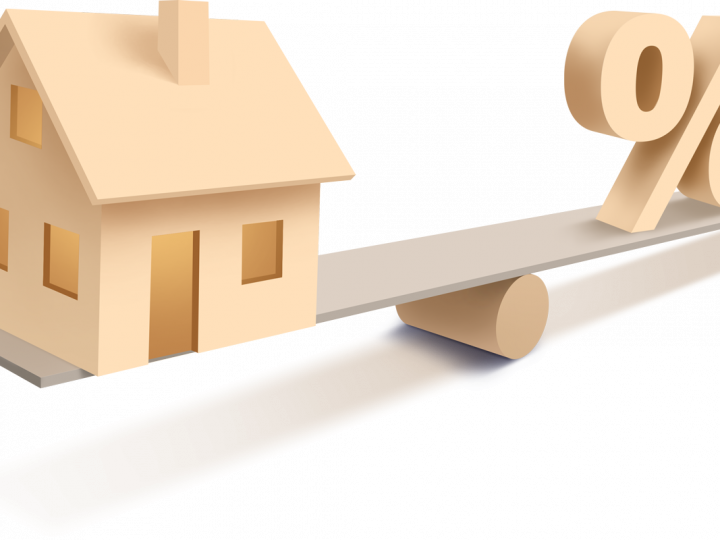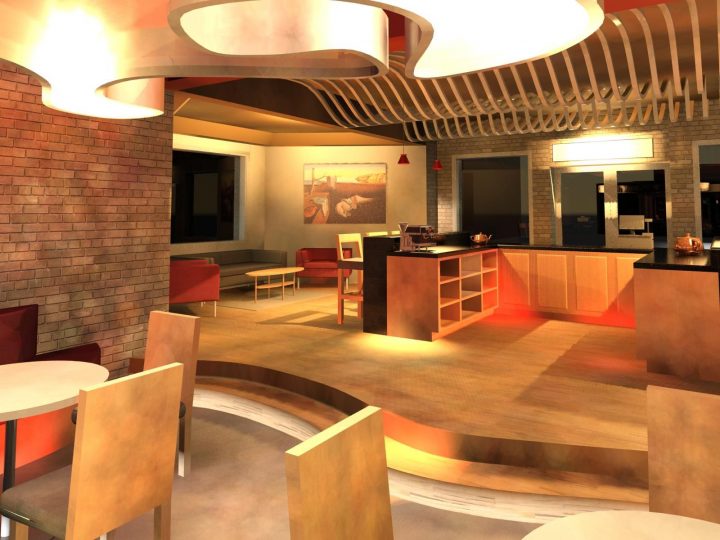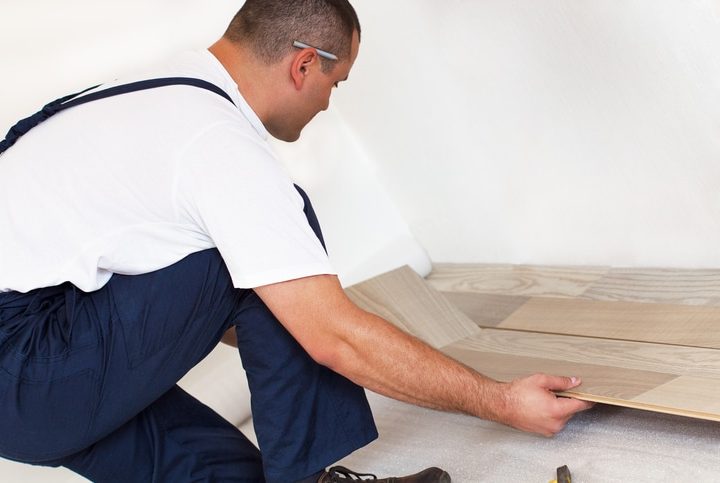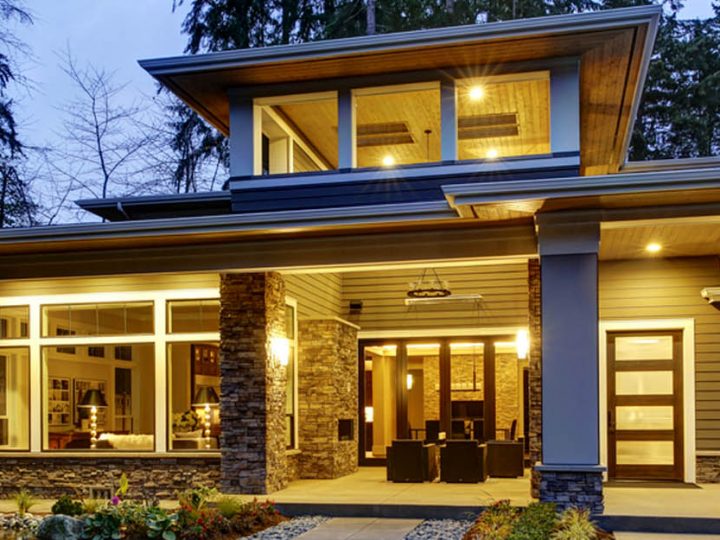Everyone who dares at house building, knows, that the first step is the lot choice. Character of a lay of land defines forthcoming expenses for building and a choice of the project of the future house. For erection of buildings equal platforms are considered as the most successful place. Still our ancestors advised not to build on the district opened to strong winds, to avoid mountains, lowlands and ravines. But if nevertheless you managed a lot, far from perfect it is not necessary to lower hands – the difficult raised work can play good service, important only correctly to use it.
We build on a raised work
The surface structure is meant a lay of land – mountains, lowlands, hills, valleys, ravines, bulges and recesses, a plateau. The raised work is defined by a downgrade – falling of a surface which pays off the relation of a difference of height between two points on district to distance between these points, on a horizontal (fig.) or a tangent of an angle of slope of a line of district to a horizontal plane in the given point. The downgrade is measured in percentage. For example, to ascending gradient of 15 m on 100 m of moving across there corresponds a downgrade equal 0,15 (15 %).
Equal the district is considered in case its downgrade makes no more than 3 %, a small downgrade of district – from 3 to 8 %, an average downgrade – to 20 %, the abrupt surface has more than 20 % of a downgrade. The best from the point of view of building are lots equal or with minimum (to 3 %) a downgrade towards the south, and also what have the minimum downgrade from the central part downwards from both parties (fig.)
Platforms with the minimum downgrade, the most successful for building:
Here building is as much as possible facilitated: at such raised work on a lot it is possible to carry out various variants of an arrangement of the house and other constructions.
Platforms with a downgrade to 3 %
It is possible to use at erection of standard houses. Small downgrades for water drainage from structures Be required only – them create a ground when by means of stones, gravel, cement the small downgrade from the house to a surface in height approximately 50 is created the Width on the average on 1 – 1,5 m. more widely, than the base see.
If a downgrade small – to 7 %,
That it approaches for building of buildings without basements. However, probably, that at 5-7 % of a downgrade it is required a ground with parts (rice).
If the downgrade has exceeded 8 %,
Unevenness of a surface can be used for a ground floor construction. In such cases do not do an equal platform, and create a ground floor, having cut out a part of a file of a slope. This variant is good for building of underground garage in case from a slope the entrance is possible. (Fig.)
At such decision it is necessary to take care of a waterproof finish of the walls contacting to a ground. On base outer surfaces put a layer of a waterproofing material: a road tar, a bitumen felt etc. Even before base pouring it is possible to lay also a waterproof finish layer under a base slab. More in detail about the waterproof finish device it is possible to look in article “the Device of a waterproof finish of the bases, basements and a sole plate”
When the slope abrupt also exceeds 15-20 %,
It is necessary to think of working out of the special project of the house using all possibilities of a steep gradient. Inconveniences of a slope can be turned into conclusive advantages if to use it for building of many-tier home unit that will give the chance to create separate blocks in a building: for example, guest rooms with the entrance point, a workshop, a summer kitchen, garage, a storage room. If you build on a difficult raised work, it is necessary to transform a lot into a little bit levelled, flat surfaces. All constructions place on horizontal platforms, and their width defines the size of structures.
Terraces which are fixed by breast walls are for this purpose created, and incorporate steps. Already at 12 % a building downgrade is better to erect on terraces (fig.)
The house constructed on terraces, can be, have verandahs on different circles, balconies, a patio. On terraces platforms, paths, recreation areas, arbours and so on have also.
In a case with considerable difference of a raised work, more than 15 %, are recommended to establish breast walls so that vertical joints in adjacent numbers of stones did not coincide. Breast walls do of concrete slabs, boulders, a brick, a bar, stones (fig.)
At the big height of a wall stones fasten a solution. In the bottom number the largest stones have. For increase in durability of a retaining wall all numbers of stones stack with a downgrade inside. A slope on lot borders too fix stones, and as the best material the granite, sandstone, limestone will serve for this purpose.
Where to put the house
To enter the house in district, to make its single whole with a landscape, it is possible two cores in the ways – without change or with change of an existing raised work. If the first variant is selected, the house will organically be entered in surrounding landscape. However in this case it is required to adapt its socle and underground part for relief conditions. At a choice of a variant of erection of the house on an equal platform, the natural raised work is broken, and for harmony creation on a lot be required планировочные works and great volume of an earthwork operations.
Under the relation of a longitudinal axis of the house to horizontal lines of a slope distinguish parallel (1), perpendicular (3) or diagonal 2) (fig.)
The scheme of placing of houses under the relation of a longitudinal axis of the house to horizontal lines of a slope:
The residential building and other structures on a raised work should not shade territory, therefore a general principle of an arrangement of structures on a raised work it is possible to formulate so: buildings should be under construction on the highest and dry places of a lot (rice).
At such decision the base not so is subject to moisture influence; it is easier to spend an earthwork operations; to project a ground floor easier, to furnish with sewers. At building of buildings on a raised work it is necessary to consider, that at a house arrangement on the highest place, it is possible without efforts to direct all superficial waters downhill and to use for showering of plants. In a case if there are the lots located above on a slope, than your house it is important to provide water drainage by means of pipes or by-pass flutes.
Buildings is better to focus on the south. It is good, if the facade leaves on open space, and from windows the beautiful sort opens. In a case when the house should be established on an abrupt slope, variants when it place literally in a grief are known – structure walls closely adjoin to walls of the leat hew outed in a grief, and only the facade is opened and there is towards a slope (photo).
If the house be attached on a small lot closely to a steep slope use all possibilities – the maximum approach of one of house walls to mountain, use of each equal platform, creation of terraces (photo)
Other non-standard decisions are possible also: for example, the road along a horizontal terrace guides to an upper floor which carries out hall or hall function, on the bottom terrace there is a garage, and an upper floor coinciding with an entrance point – a cable core (photo).
Important also a direction of a downgrade of a raised work quantities of heat receive, of course, southern slopes. It is desirable, that the main premises have been focused on the south, the southeast or the east. If on a southern slope to arrange the house it will allow to save energy on its heating. Slopes of southeast and east direction too are favorable for house building – heat here enough (fig.). These directions are good for placing of houses in a cold climate. As they approach and for a climate warm as here the cool earlier comes. If the entrance point in the house is located from a slope South side during winter time here will be less snow, and in the spring it will thaw more likely. Winds from a South side are weaker, and the sun will shine on a terrace in the afternoon, and to shine premises. The house on a southern slope it is necessary to have more close to an eastern frontier of a lot (fig.)
The placing scheme on a southern slope
Adverse for placing of houses northern slopes are considered, the hot climate can become an exception only. The best place for the house on northern slope – is closer to its western border, in the middle of a slope (fig.).
The scheme of placing of the house on northern slope
Without dependence from a climatic conditions it is better to avoid building on the western slopes as in second half of day they always strongly heat up from the afternoon sun. If the lot is on east or western slopes the house have at northern border on the highest point, and all economic constructions it is necessary to place more low (fig.)
The scheme of placing of the house on the western slope
At house placing on rough country, it is necessary to consider, that at night cold air falls downwards, and when on its way there will be a barrier «the cold pocket» can be formed so-called or in another way it still name «a frosty pocket». If an obstacle in a way of cold air – the house the temperature there can fall at night on 9 degrees more low, than at environment (fig.)
If in plans there is a creation of a winter garden it can be placed on a house North side. In this case besides the basic function, he will play a role of the original thermic buffer, besides, it is not necessary to establish the sunshields protecting indoor plants from a straight sunlight. It is good also if the open part of a winter garden leaves on a slope. More in detail about the device of a winter garden it is possible to read in article “the Garden all year long”.
General provisions of placing of houses on a raised work:
(Rice)
* If there is a possibility is better constructions in which animals will take places, compost pits, or exterior W.C.s, to have on distance of 15 metres from the house. Certainly, it will be better, if they are downhill.
* Also it is quite good, if distance from premises of the house before constructions on an adjoining property, there will be not less than 6 metres.
* house Displacement to territory border liberates a place for journey on a lot.
More in detail about principles of a planishing of a lot look in article “Main principles of a planishing of a lot”
Building of houses on a raised work complicates the preparatory period:
* Each project should be individual and is adhered to concrete district.
* It is necessary to consider a lot downgrade, its arrangement concerning parts of the world.
* project Working out is preceded by difficult calculations.
* It is necessary to take care of selection of the waterproofing materials keeping premises, adjoining a ground, from a moisture; More in detail about waterproof finish sorts it is possible to read in article “waterproof finish Sorts at house building”.
* Difficulties can arise and under construction, connected, with creation of terraces or a cutting of a lot of a slope under ground floors.
All aforesaid attracts additional expenses. But the rough raised work can become an inspiration source. The competent arrangement of the house and other constructions, considering features of district, will make a lot unique. The houses constructed on a raised work, can become the present products of architecture.
Besides, there are also objective positive sides of building on a rough lot: downgrades promote not compulsory, natural outflow of superficial waters which can be used for showering; it is possible to save on an earthwork operations at creation socle and basement storeys, and also garage. So it is not necessary to be baffled, if your lot is on a rough raised work – it can promote creation of unique architecture of the house.
Everyone who dares at house building, knows, that the first step is the lot choice. Character of a lay of land defines forthcoming expenses for building and a choice of the project of the future house. For erection of buildings equal platforms are considered as the most successful place. Still our ancestors advised not to build on the district opened to strong winds, to avoid mountains, lowlands and ravines. But if nevertheless you managed a lot, far from perfect it is not necessary to lower hands – the difficult raised work can play good service, important only correctly to use it.




